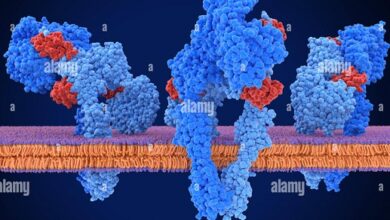Difference between organic and inorganic compounds
The main difference between organic and inorganic compounds is the presence of a carbon atom.
Organic compounds contain a carbon atom and usually also have a hydrogen atom to form hydrocarbons. On the other hand, almost none of the inorganic compounds contain carbon and/or hydrogen atoms.
Difference between organic and inorganic compounds
Although the vast majority of inorganic compounds do not contain carbon, there are some exceptions. For example, carbon monoxide and carbon dioxide contain carbon atoms.
However, the amount is not enough to form strong bonds with the oxygen present in the molecule. Therefore, scientists have always considered these compounds to be inorganic. Therefore, although a compound contains carbon, it is not necessarily considered organic.
Another major difference between the two compounds is the type of molecule and its association with living things. Organic compounds include things like nucleic acids found in DNA, lipids, sugars, lipid acids found in the cells of living organisms, proteins and enzymes needed for cellular processes. Hydrocarbon fuels are also considered organic.
On the other hand, inorganic compounds include elements such as salts, metals and other essential components. Substances made of solitary elements and any compound that does not have carbon atoms bonded to hydrogen atoms are also considered inorganic.
Despite these characteristics, organic chemists have not reached a definitive agreement between the difference of organic and inorganic compounds. Being a debate still standing, they refer to the presence of carbon in the molecule as the most accepted identification method.
Organic compounds
In these compounds, one or more carbon atoms are bonded to atoms of other elements. The most common elements they are bonded to are usually hydrogen, oxygen, and nitrogen. The few compounds that contain carbon and are not considered organic are cyanides, carbonates, and carbides.
Traditionally, organic compounds are considered to be of great importance, since all known life is based on organic compounds. The most basic petrochemicals are considered the foundation of organic chemistry.
The modern definition of an organic compound is any compound that contains a significant amount of carbon, although many of the organic compounds known today have no connection to any substance found in living organisms.
There are several compounds that are considered organic even though they lack hydrogen and carbon bonds. These include benzenexole, mesoxalic acid and carbon tetrachloride.
Organic compounds can be classified into natural compounds and synthetic compounds.
natural compounds
They refer to compounds produced by plants and animals. Many of these compounds are extracted from natural sources because it would be too expensive to manufacture them artificially.
The most common are sugars, some alkaloids and nutrients like vitamin B12. Generally, they are all compounds that have large or complicated molecules and that can be found in reasonable amounts in living organisms.
synthetic compounds
Compounds that are prepared thanks to the reaction of other compounds are considered synthetic. They can be compounds found in nature or non-naturally occurring compounds.
Most polymers, such as plastics and rubber, are semi-synthetic organic compounds.
Biotechnology
Many organic compounds, such as ethanol and insulin, are manufactured industrially using bacterial and yeast organisms. Normally, an organism’s DNA is altered to express compounds that are not normally produced in the organism.
Many compounds manufactured by biotechnology did not previously exist in nature.
Inorganic compounds
A compound can be considered inorganic if it does not contain a bond between carbon and hydrogen, called CH bond in chemistry, in its composition. Furthermore, inorganic compounds tend to be mineral or geologically based compounds that do not contain carbon bonded to hydrogen molecules. This is why many of the inorganic compounds are metals.
A compound can be said to be inorganic if it meets any of these criteria:
- There is no presence of charcoal in its composition.
- It is of non-biological origin.
- It cannot be found or incorporated into a living organism.
Currently, inorganic compounds can also be defined as any compound that is not organic in nature.
It is for this reason that some simple compounds that contain carbon are called inorganic. Some of these compounds include carbon monoxide, carbon dioxide, sodium bicarbonate, carbides, carbonates and cyanides.
Many of these compounds are normal parts of many primarily organic systems, including organisms. This means that a chemical can be described as inorganic, but that does not mean that it is not present in living organisms.
Minerals are mainly oxides and sulfates, which are strictly inorganic, although they are of biological origin. In fact, most of planet Earth is inorganic.
Although the components of Earth’s layers are well understood, the mineralization process and deep layer composition remain active areas of research.
The truth is that most compounds in the universe are inorganic in nature. For this reason, inorganic compounds have a great application and many practical uses in everyday life. As many of the compounds in the world are inorganic, these compounds can have many different forms and very different characteristics.
For example, since many are metals, they can transmit electricity. They also tend to have high boiling points, as well as very vivid and bright colors. They normally dissolve very well in water and many of them have the ability to form crystals.




